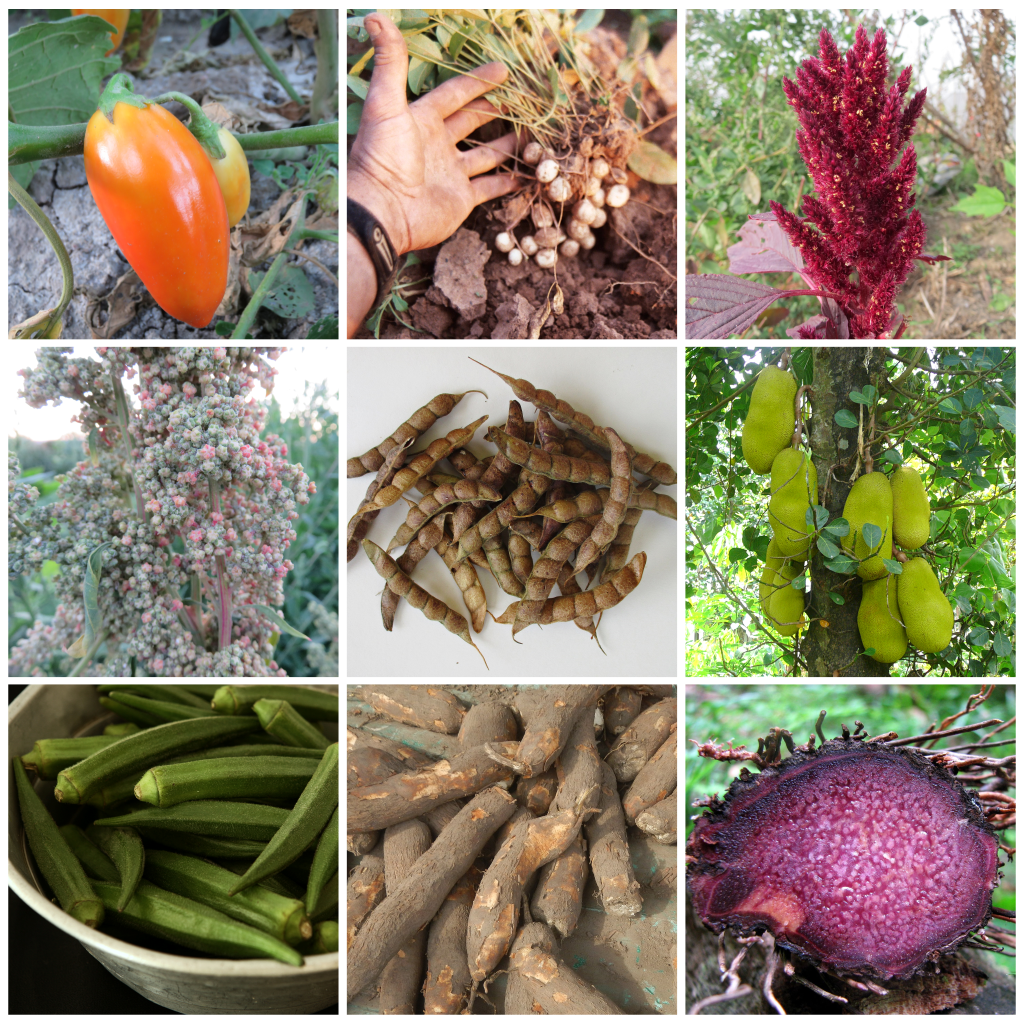The Importance of Indigenous Crops
Katheryn Chen and Patrick Byrne
Colorado State University, Fort Collins, Colorado 80523
Corresponding author: kat.chen@colostate.edu; patrick.byrne@colostate.edu
OUTLINE
1. UNDERSTUDIED INDIGENOUS CROPS

“Understudied Indigenous crops” refers to those that have been overlooked in research efforts and commercial networks, despite any regional importance as food sources and value for smallholder production. These may include both annual and perennial species of cereals, pseudocereals, legumes, oilseeds, roots, tubers, vegetables, and fruits. Many have undergone only minimal human selection and some are still in an essentially wild state (Jamnadass et al., 2020). Because they are frequently grown in marginal environments subject to heat and drought stress, Indigenous crops can be regarded as promising resources for stress tolerant gene discovery (Kumar et al., 2023). Many of these crops are rich sources of nutrients including vitamins, essential minerals, and amino acids, and their increased consumption could benefit human health (Talabi et al., 2022).
The term “understudied Indigenous crops” was coined by Dwyer et al. (2022) as an alternative to “orphan crops” and other terms that similarly undervalue the significance of these resources and neglect the rich connection between the crops and those who cultivate them. While this eBook refers to this diverse grouping of crops as either “understudied Indigenous crops,” or simply “Indigenous crops”, we recognize that information about them may be found under different terms, including:
- Orphan crops
- Underutilized crops
- Forgotten crops
- Lost crops
- Neglected crops
- Minor crops
- Crops of the future
Why have these crops with such positive attributes been largely ignored by science and commerce? Jamnadass et al. (2020) discuss several reasons for this neglect. The emphasis of global research on major crops as the principal sources of calories has meant less attention given to other crops. A European bias in research priorities has resulted in little investment in crops primarily grown by subsistence farmers in Africa, Asia, or Latin America. And the complex biology of some species has been a barrier to crop improvement research.
Fortunately, the tide has now begun to turn for Indigenous crops. This is due to the growing realization of the need for more nutritious diets, stress tolerant crops, and more diverse cropping systems (Tadele, 2019). In some cases, these crops are considered to offer economic opportunity for smallholder farmers (Talabi et al., 2022). New technologies (including more affordable DNA sequencing, high-throughput phenotyping, gene editing, and speed breeding) have led to innovative strategies for tapping the riches hidden in genebank collections (Chiurugwi et al., 2019; Jamnadass et al., 2020, Kamenya et al., 2021; Kumar et al., 2023; Zsogon et al., 2022). Importantly, research on underutilized crops promises not only improvement of those crops per se, but also gene discovery and insights that can be applied to major crops like wheat, rice, and soybeans.
While many of these crops are now receiving the benefit of increased research attention, more robust investment in germplasm conservation, modern breeding resources, seed systems, and marketing channels are still needed (Kamenya et al., 2021).
2. REFERENCES
Chiurugwi T, Kemp S, Powell W, Hickey LT. 2019. Speed breeding orphan crops. Theoretical and Applied Genetics 132:607-616. DOI: 10.1007/s00122-018-3202-7
Dwyer W, Ibe CN, Rhee SY. 2022. Renaming indigenous crops and addressing colonial bias in scientific language. Trends in Plant Science 27:1189-1192. DOI: 10.1016/j.tplants.2022.08.022
Jamnadass R, Mumm RH, Hale I, Hendre P, Muchugi A, et al. 2020. Enhancing African orphan crops with genomics. Nature Genetics 52:356-360. DOI: 10.1038/s41588-020-0601-x
Kamenya SN, Mikwa EO, Song B, Odeny DA. 2021. Genetics and breeding for climate change in orphan crops. Theoretical and Applied Genetics 134:1787-1815. DOI: 10.1007/s00122-020-03755-1
Kumar B, Singh AK, Bahuguna RN, Pareek A, Singla-Pareek S.L. 2023. Orphan crops: A genetic treasure trove for hunting stress tolerance genes. Food and Energy Security 12:e436. DOI: 10.1002/fes3.436
Tadele Z. 2019. Orphan crops: Their importance and the urgency of improvement. Planta 250:677-694. DOI: 10.1007/s00425-019-03210-6
Talabi AO, Vikram P, Thushar S, Rahman H, Ahmadzai H, et al. 2022. Orphan crops: A best fit for dietary enrichment and diversification in highly deteriorated marginal environments. Frontiers in Plant Science 13:839704. DOI: 10.3389/fpls.2022.839704
Zsogon A, Peres LEP, Xiao Y, Yan J, Fernie AR. 2022. Enhancing crop diversity for food security in the face of climate uncertainty. The Plant Journal 109:402-414. DOI: 10.1111/tpj.15626
3. CHAPTER INFORMATION
Chapter citation: Chen K, Byrne P. 2023. The Importance of Indigenous Crops. In: Chen K, Byrne P (Eds.) Understudied Indigenous Crops. Fort Collins, Colorado: Colorado State University. Date accessed. Available from https://colostate.pressbooks.pub/understudiedindigenouscrops/chapter/importance/

